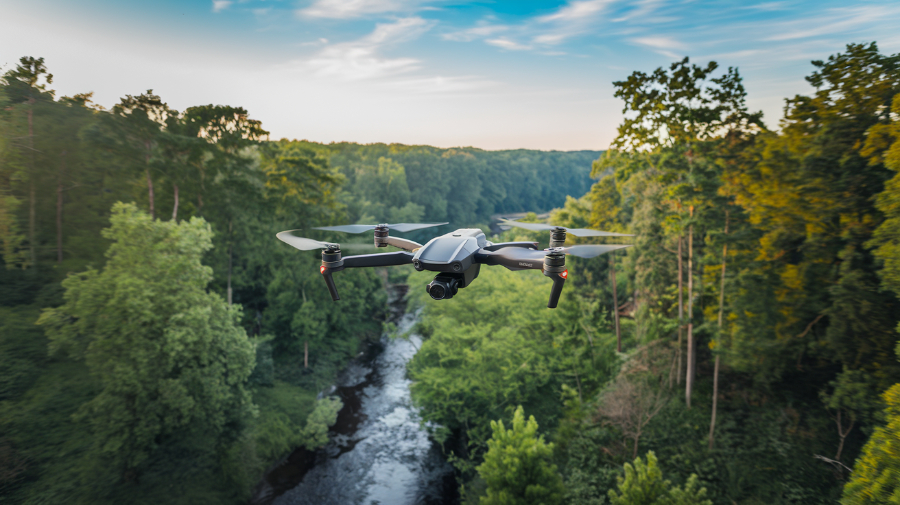The Unmanned Systems Market is on a transformative growth trajectory, projected to expand from USD 27.13 billion in 2024 to USD 43.54 billion by 2030, growing at a robust CAGR of 8.2%. With the ability to perform critical tasks without risking human lives, these systems are becoming indispensable across industries such as defense, agriculture, logistics, and research.
This blog delves into the concept of unmanned systems, their working mechanisms, market dynamics, key players, and the latest trends shaping this evolving landscape.
What Are Unmanned Systems?
Unmanned systems refer to autonomous or remotely operated vehicles that perform various tasks without human intervention. These systems can operate in air, land, and sea domains and are equipped with advanced technologies like artificial intelligence (AI), machine learning (ML), and high-tech sensors.
Types of Unmanned Systems
Unmanned Aerial Vehicles (UAVs): Commonly known as drones, used in surveillance, mapping, and delivery services.
Unmanned Ground Vehicles (UGVs): Operate on land for applications like bomb disposal and logistics.
Unmanned Surface Vehicles (USVs): Deployed for maritime tasks such as environmental monitoring and naval operations.
Autonomous Underwater Vehicles (AUVs): Used for underwater exploration, research, and defense missions.

Unmanned Systems Industry
How Do Unmanned Systems Work?
Unmanned systems are designed to perform specific tasks with minimal or no human input. Their functionality is powered by:
Sensors and Cameras: Enable real-time data collection and situational awareness.
Navigation Systems: Utilize GPS, inertial measurement units (IMUs), and advanced algorithms for precise movement.
Communication Networks: Depend on reliable connectivity (e.g., 5G, SATCOM) for remote control and data transfer.
AI and ML: Enhance decision-making and autonomous operation capabilities.
Energy Systems: Batteries or alternative power sources that determine endurance and operational efficiency.
Download PDF Brochure: https://www.marketsandmarkets.com/pdfdownloadNew.asp?id=18210274
Unmanned Systems Industry Growth Drivers
1. Rising Demand for ISR and Target Acquisition
Unmanned systems offer enhanced Intelligence, Surveillance, and Reconnaissance (ISR) capabilities, enabling real-time data collection for military and commercial purposes.
2. Growing Defense Budgets
Increasing geopolitical tensions and the need for modernized military infrastructure drive investments in unmanned systems for surveillance, combat, and logistics operations.
3. Technological Advancements
Innovations in AI, ML, and sensor technologies are enabling unmanned systems to perform complex tasks autonomously, boosting adoption across industries.
4. Cost Efficiency
Compared to manned systems, unmanned vehicles offer lower operational costs, making them an economically viable choice for organizations.
Unmanned Systems Market Opportunities
1. Integration with Smart Technologies
The integration of unmanned systems with IoT, big data, and cloud computing can unlock new applications in sectors like agriculture, healthcare, and logistics.
2. Expansion in Emerging Economies
Countries in Asia-Pacific and the Middle East are investing heavily in unmanned technologies, creating lucrative opportunities for market players.
3. Commercial Applications
From package delivery to crop monitoring, commercial sectors are leveraging unmanned systems to enhance efficiency and reduce costs.
Key Players in the Unmanned Systems Market
- Northrop Grumman (US)
- Lockheed Martin Corporation (US)
- Teledyne Technologies Inc. (US)
- DJI (China)
- BAE Systems (UK)
- Thales (France)
- Israel Aerospace Industries (Israel)
- Boeing (US)
- General Dynamics Corporation (US)
- L3Harris Technologies Inc. (US)
Ask for Sample Report: https://www.marketsandmarkets.com/requestsampleNew.asp?id=18210274
Recent Developments in the Unmanned Systems Market
Product Launches: Companies like DJI and Lockheed Martin are introducing next-gen drones with enhanced endurance and payload capabilities.
Strategic Collaborations: Partnerships between defense contractors and tech firms to integrate AI into unmanned systems.
Regulatory Advancements: Efforts to standardize drone usage across international markets.
Military Adoption: Increased procurement of UAVs and UGVs by armed forces worldwide.
Challenges in the Unmanned Systems Market
Cybersecurity Risks: Unmanned systems are prone to data breaches, which can compromise mission integrity.
Regulatory Constraints: Varied regulations across countries hinder the seamless deployment of these systems.
Power Supply Issues: Limited battery life restricts operational capabilities.
Frequently Asked Questions (FAQs)
1. What are unmanned systems?
Unmanned systems are vehicles or devices that operate autonomously or remotely without direct human control.
2. Which industries use unmanned systems?
Defense, agriculture, logistics, healthcare, and environmental monitoring are key sectors utilizing these systems.
3. What drives the unmanned systems market?
Key drivers include rising defense budgets, technological advancements, and increasing demand for ISR capabilities.
4. What challenges does the market face?
Cybersecurity risks, regulatory complexities, and power supply limitations are major challenges.
To Gain Deeper Insights Into This Dynamic Market, Speak to Our Analyst Here: https://www.marketsandmarkets.com/speaktoanalystNew.asp?id=18210274
Key Takeaways
- The Unmanned Systems Market is projected to grow significantly, reaching USD 43.54 billion by 2030.
- North America is expected to lead the market, driven by strong defense investments and technological advancements.
- Key growth drivers include increased demand for ISR capabilities and global defense modernization.
- Opportunities lie in emerging economies and the integration of advanced technologies like AI and IoT.
- Leading players include Northrop Grumman, Lockheed Martin, and DJI, among others.